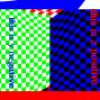Free Online Productivity Tools
i2Speak
i2Symbol
i2OCR
iTex2Img
iWeb2Print
iWeb2Shot
i2Type
iPdf2Split
iPdf2Merge
i2Bopomofo
i2Arabic
i2Style
i2Image
i2PDF
iLatex2Rtf
Sci2ools
CVPR
2001
IEEE
2001
IEEE
Geometric Distributions for Catadioptric Sensor Design
We present a general method of catadioptric sensor design for realizing prescribed projections. Our method makes use of geometric distributions in 3-dimensional space, which are generalizations of vector fields. The main idea is this: if one desires a reflective surface that will image the world in a certain way, then this condition determines the orientation of the tangent planes to the surface. Analytically, this means that the surface will then be determined by a pair of partial differential equations, which may or may not have a common solution. We show how to check if a common solution exists. If no common solution exists, we describe a method for obtaining optimal approximate solutions in a least-squares sense. As an example application, we construct a mirror that will give a panoramic view of a scene without any digital unwarping. Presented at CVPR 2001
Catadioptric Sensor Design | Common Solution Exists | Computer Vision | CVPR 2001 | General Method | Optimal Approximate Solutions | Reflective Surface |
| Added | 12 Oct 2009 |
| Updated | 29 Oct 2009 |
| Type | Conference |
| Year | 2001 |
| Where | CVPR |
| Authors | R. Andrew Hicks, Ronald K. Perline |
Comments (0)

